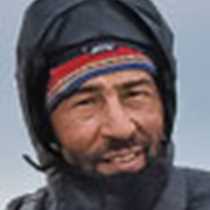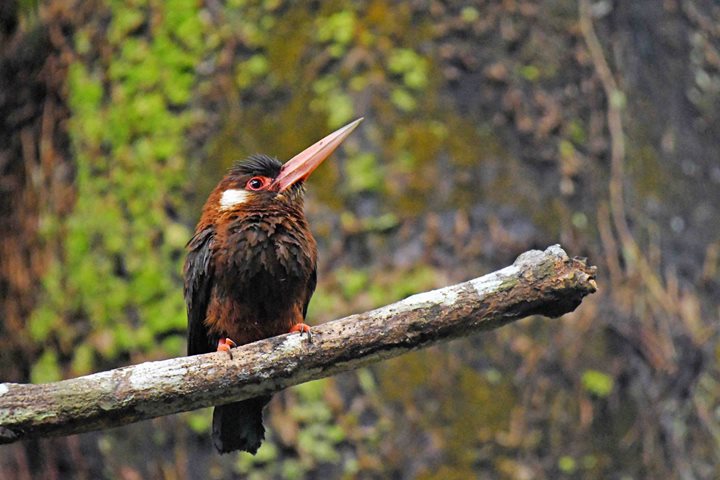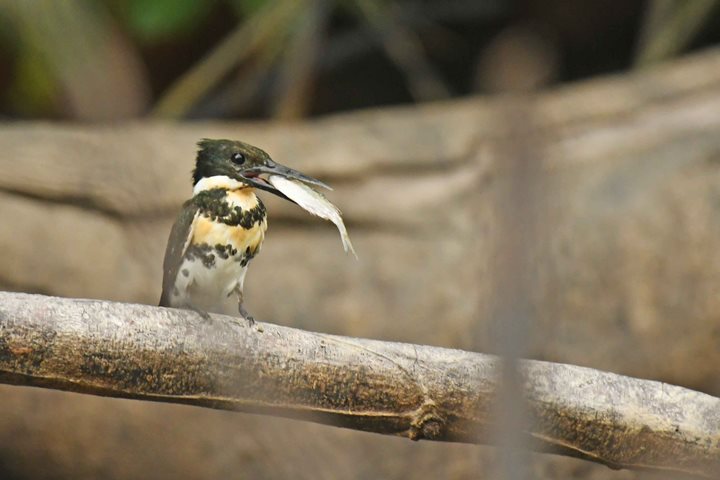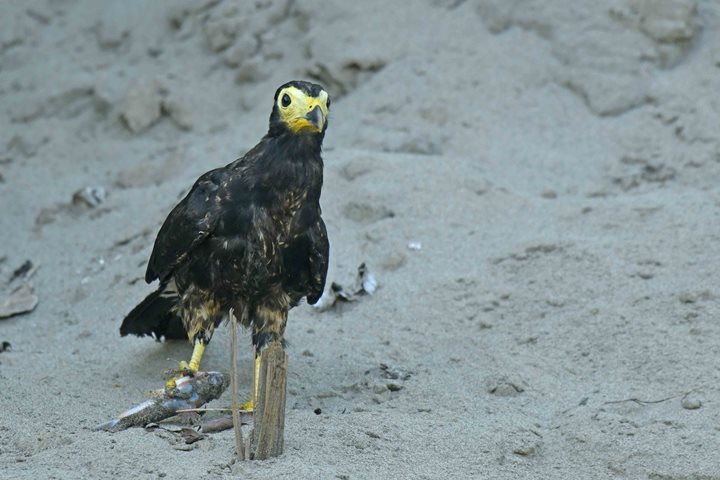Early this morning after navigating a good part of last night, we woke up by the Belluda Caño, another of the very many tributaries of the Amazon, and prepared to start our explorations at the break of dawn and before breakfast, during the best time of the day, when creatures are most active feeding. We loaded our always-reliable skiffs and departed to explore.
Once on our skiffs, we split up into three groups, and took off to explore. Very soon our naturalist and skiff drivers started to find interesting things for us to observe and photograph.
Just the vegetation of this seasonally flooded forest is in itself very interesting as well, like the giant Amazon lily pads blooming. Among other interesting things, we found one of the iconic birds of the Amazonia, the primitive looking hoatzin, a bird that looks like the missing link in between reptiles and birds.
It was a rewarding morning, because for such a short ride we where able to find three species of monkeys. The minute night monkeys hiding high in a hole in a tree, looking curiously down at us with their big eyes adapted for night life, and two very active troops of saddle-backed tamarins and common squirrel monkeys, jumping swiftly through the branches and bushes adjacent to the canal. It was an ideal morning for building up an appetite for the delicious breakfast that awaited for us upon our return.
The rest of our day was full of activities. The naturalist gave us a couple of talks where we learned about fruits and medicinal plants of the tropical rain forest. And later in the afternoon we explored some more different waterways of the Amazon.
We left the Delfin II a little later this afternoon, because the idea this time was to explore for longer and return after dark. So some of the birds we could observe very well this afternoon were the large horned screamer, and very active black collared hawks, as it got dark our naturalist then took out the spotlights to continue looking for the nocturnal creatures such as the ones we saw indeed, like the spectacled and black caimans hiding in the floating vegetation, large fishing bats skimming the surface of the water for fish, elusive and mysterious looking owls, and the odd looking great potoo, with its incredible mimicry, during the day it really looks more like part of branch than a bird, but during the night it was very alert and active looking around for large insects and bats to catch and eat.
It was a long intense and rewarding day exploring the mighty Amazon.







